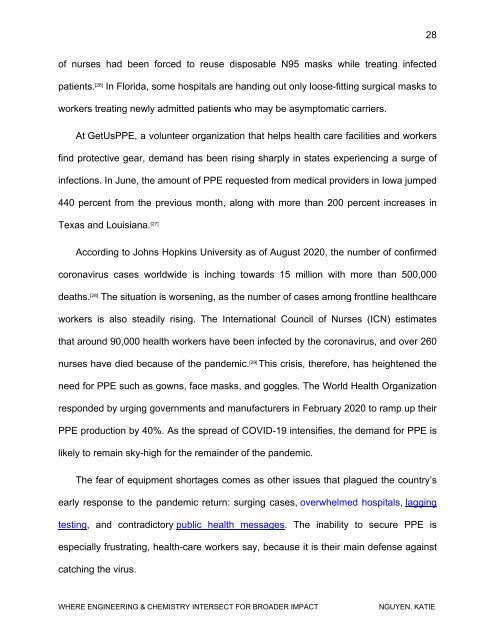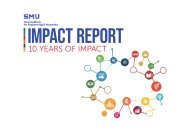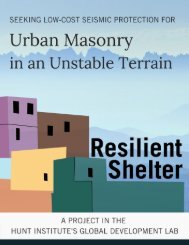Where Engineering & Chemistry Intersect for Broader Impact
Currently, many biodegradable products in the market are bio-based, such as polysaccharides, proteins, and lipids, and are focused on conventional plastic applications. This approach to production of biodegradable plastics, however, is facing mounting challenges due to high cost, weaker performance, and environmental issues. In addition, several biodegradable plastics have proven to break down quickly under specific, simulated environmental conditions, but they may not be effectively degradable under natural conditions. As a result of these challenges and many more, there exists a gap in the market. Our Project Affiliates, Dr. Son and Dr. Krueger, aim to bridge this gap by pursuing a biodegradable plastic that better addresses the aforementioned challenges, investigating a prototype plastic with predictable degradation and mechanical properties. In the spirit of interdisciplinary innovation, they seek to develop a joint chemical and engineering approach to biodegradable plastics for broader impact.
Currently, many biodegradable products in the market are bio-based, such as polysaccharides, proteins, and lipids, and are focused on conventional plastic applications. This approach to production of biodegradable plastics, however, is facing mounting challenges due to high cost, weaker performance, and environmental issues. In addition, several biodegradable plastics have proven to break down quickly under specific, simulated environmental conditions, but they may not be effectively degradable under natural conditions. As a result of these challenges and many more, there exists a gap in the market.
Our Project Affiliates, Dr. Son and Dr. Krueger, aim to bridge this gap by pursuing a biodegradable plastic that better addresses the aforementioned challenges, investigating a prototype plastic with predictable degradation and mechanical properties. In the spirit of interdisciplinary innovation, they seek to develop a joint chemical and engineering approach to biodegradable plastics for broader impact.
Create successful ePaper yourself
Turn your PDF publications into a flip-book with our unique Google optimized e-Paper software.
28<br />
of nurses had been <strong>for</strong>ced to reuse disposable N95 masks while treating infected<br />
patients. [26] In Florida, some hospitals are handing out only loose-fitting surgical masks to<br />
workers treating newly admitted patients who may be asymptomatic carriers.<br />
At GetUsPPE, a volunteer organization that helps health care facilities and workers<br />
find protective gear, demand has been rising sharply in states experiencing a surge of<br />
infections. In June, the amount of PPE requested from medical providers in Iowa jumped<br />
440 percent from the previous month, along with more than 200 percent increases in<br />
Texas and Louisiana. [27]<br />
According to Johns Hopkins University as of August 2020, the number of confirmed<br />
coronavirus cases worldwide is inching towards 15 million with more than 500,000<br />
deaths. [28] The situation is worsening, as the number of cases among frontline healthcare<br />
workers is also steadily rising. The International Council of Nurses (ICN) estimates<br />
that around 90,000 health workers have been infected by the coronavirus, and over 260<br />
nurses have died because of the pandemic. [29] This crisis, there<strong>for</strong>e, has heightened the<br />
need <strong>for</strong> PPE such as gowns, face masks, and goggles. The World Health Organization<br />
responded by urging governments and manufacturers in February 2020 to ramp up their<br />
PPE production by 40%. As the spread of COVID-19 intensifies, the demand <strong>for</strong> PPE is<br />
likely to remain sky-high <strong>for</strong> the remainder of the pandemic.<br />
The fear of equipment shortages comes as other issues that plagued the country’s<br />
early response to the pandemic return: surging cases, overwhelmed hospitals, lagging<br />
testing, and contradictory public health messages. The inability to secure PPE is<br />
especially frustrating, health-care workers say, because it is their main defense against<br />
catching the virus.<br />
WHERE ENGINEERING & CHEMISTRY INTERSECT FOR BROADER IMPACT<br />
NGUYEN, KATIE













